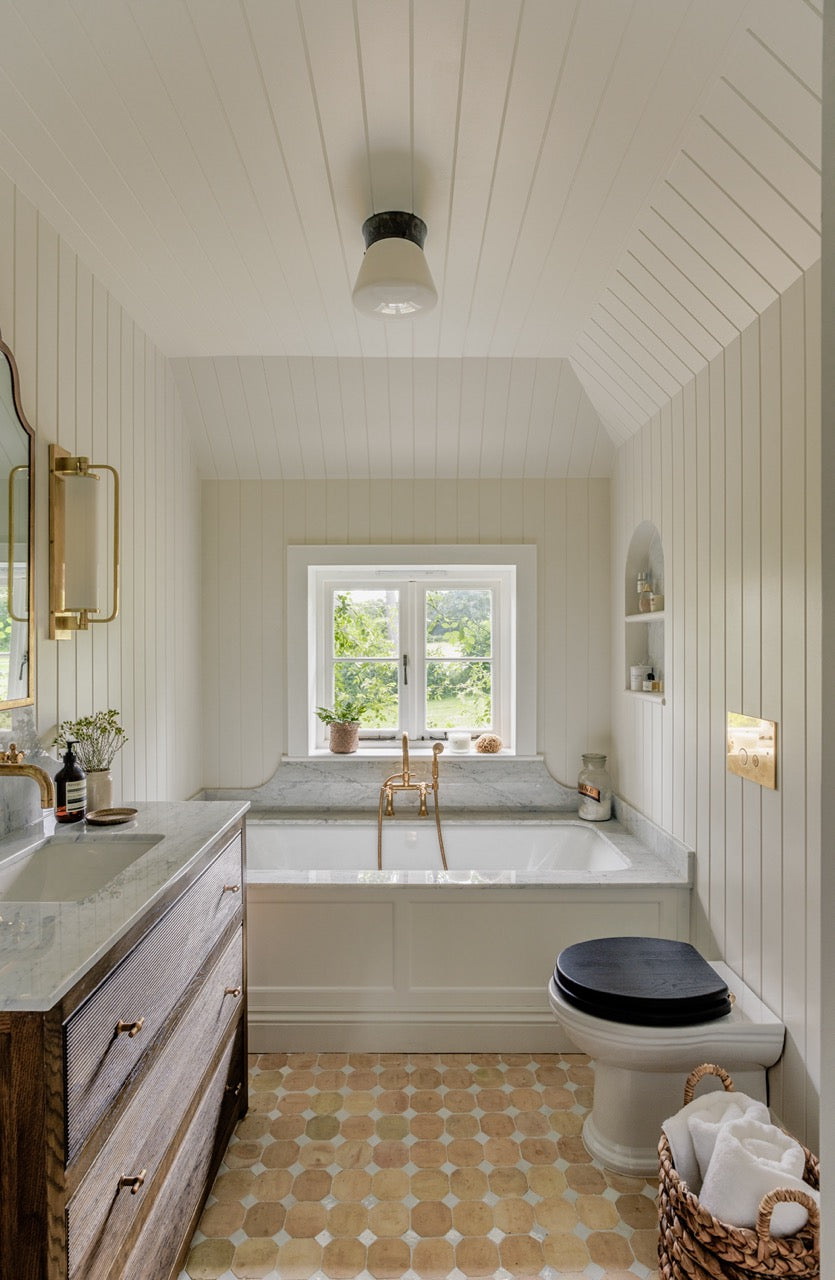
How to use panelling
|
|
Time to read 3 min
|
|
Time to read 3 min
It is by no means a secret that I love a bit, (ok a lot) of panelling. I am going to go as far as to say, that I don’t think there is a project I have worked on in my later career where I haven’t used it in some form or shape or another.
When it comes to interior design, there are countless ways to transform a space, and one versatile option that has stood the absolute test of time is panelling. Interior panelling isn't just about enhancing the visual appeal of your home; it can also serve functional purposes. From adding warmth and texture to providing insulation and protection, the possibilities are endless. In this post, I’m going to explore the world of interior panelling, and its various applications, and offer some tips and ideas on how to use it effectively.
Panelling has a rich history in interior design. It has graced the walls of grand estates and cosy cottages, adding character and elegance to living spaces for many years. Today, it remains a popular choice for its timeless appeal. The versatility of panelling allows you to achieve a wide range of styles, from classic to contemporary, making it suitable for any interior.
The first step in using interior panelling effectively is selecting the right material. Common options include wood, MDF, PVC, metal, and fabric-covered panels. Each material offers distinct advantages:
Wood: Wood panels bring warmth and character to a room, making them ideal for traditional and rustic interiors. You will see all the lovely knots and grain. The disadvantages are that as the boards are individually applied, they will be more expensive and prone to movement.
MDF: Medium-density fiberboard (MDF) is a cost-effective option that can be painted to achieve a variety of looks.
PVC: PVC panels are moisture-resistant, making them perfect for bathrooms and kitchens.
Metal: Metal panels lend a modern and industrial vibe to a space.
Fabric-Covered: Fabric-covered panels are a stylish choice for adding texture and softness to a room.
Decoration: The primary function of many panels is to enhance the aesthetic appeal of a room. Decorative panels come in a variety of styles, patterns, and finishes to suit your design preferences.
Insulation: Some panels are designed for thermal or acoustic insulation, helping regulate temperature and reduce noise, making your living spaces more comfortable.
Protection: Panelling can protect walls from everyday wear and tear. It's particularly beneficial in high-traffic areas, such as hallways and entryways.
Covering Imperfections: Panelling can cover up wall imperfections, like cracks or uneven surfaces, providing a polished finish.
Here are some tips to make the most of your interior panelling:
Select the Style: Choose a paneling style that complements your room's design. Whether it's beadboard, shiplap, or raised panels, ensure it harmonizes with your décor.
Consider the Layout: Decide where to install the panelling. You can opt for full wall coverage, an accent wall, or use it as wainscoting. The layout should enhance your space's aesthetics.
Colour and Finish: The colour and finish of your panels can drastically impact the overall look. Experiment with different finishes like matte, gloss, or distressed for varied effects.
Mix and Match: Don't be afraid to combine panelling styles or materials for a unique look. Mixing traditional wood panels with modern metal accents can create a visually intriguing space.
Lighting: Plan your lighting to highlight the paneling effectively. Sconces, recessed lighting, or decorative fixtures can accentuate the texture and design of the panels.
Balance with Other Elements: Ensure the panelling complements other design elements, such as furniture and décor, to create a harmonious interior.
Incorporating interior panelling into your home is an art that combines style, function, and creativity. Whether you want to create a cosy, traditional atmosphere or a modern, sleek one, thoughtful selection and placement of panelling can make a significant difference in your home's aesthetic and functionality. So, let your creativity flow, and transform your living spaces with the timeless beauty of interior panelling.
Have fun panelling. Make sure to tag us in your photos.
Love Jojo x
For more inspo, follow us on instagram @houseninedesign.
